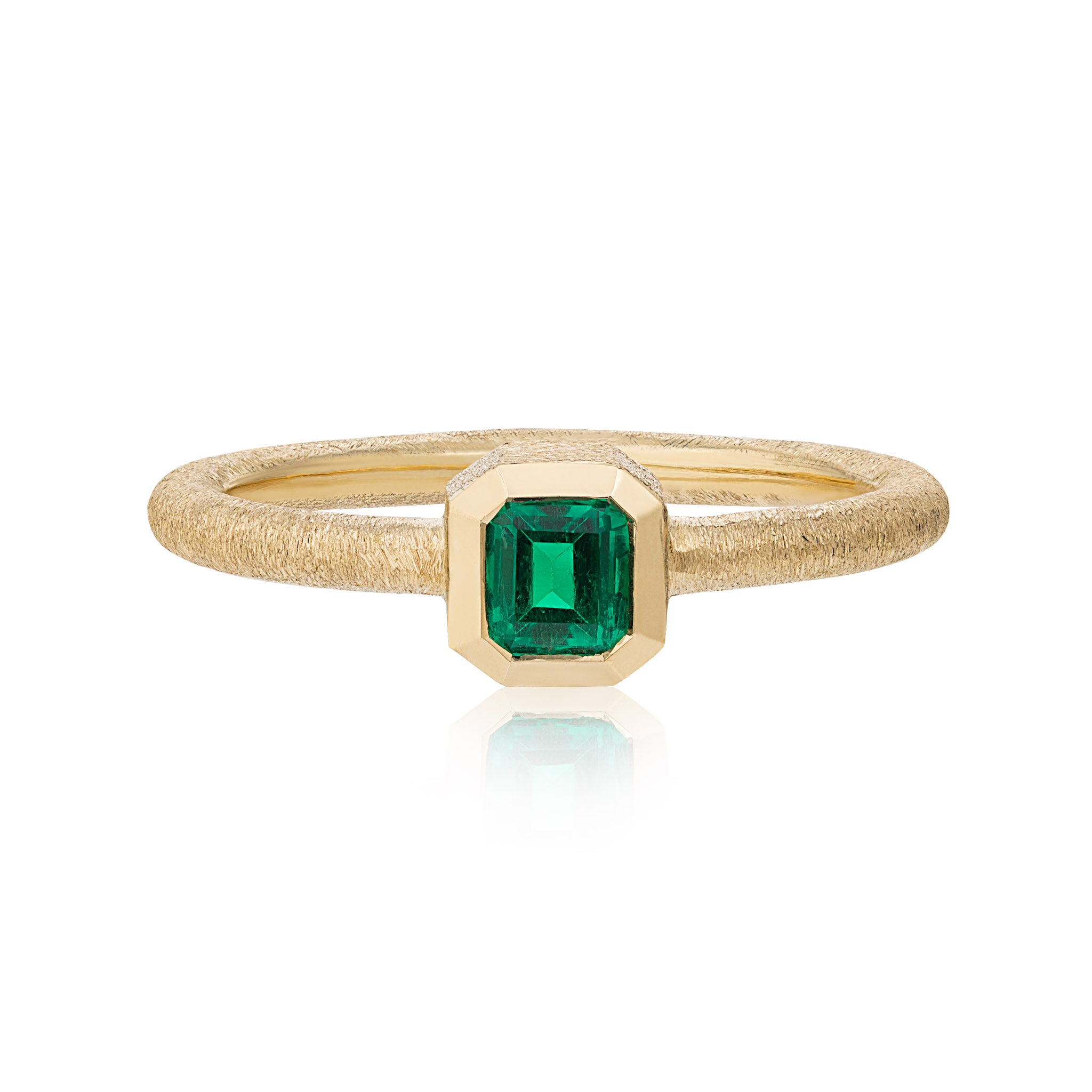
Emeralds are the most popular gemstone in the world. They are prized for their rich green colour and unique inclusions. Treatments are often used to enhance emeralds, from natural oil to synthetic resins find out more in our complete guide to emerald treatments.
What is an emerald?
Emeralds are a variety of beryl, a mineral that is a member of the same family as aquamarine, morganite, and heliodor.
Emeralds tend to be among the most included of all natural gemstones.
The word "emerald" comes from the Old French word "esmeraude," which means "green gem”, These words are a variant of the Latin word 'smaragdus', which originates from the Greek 'smaragdus', which means 'green gem'. The inclusions within an emerald are often known as the 'Jardin' or garden inside an emerald and contribute to their beauty.
These inclusions are also tolerated because the finest emeralds display a vivid bluish-green colour that is quite unique in the gems world.

How do emeralds get their colour?
The green colour in emeralds comes from trace amounts of chromium, vanadium and Iron present. The varying amounts of these three elements give the emerald it’s unique colour.
Why are emeralds treated?
It has long been known that emeralds can be oiled to improve their appearance. Over 99% of emeralds have surface reaching fractures that are treated.
Treatment is done to improve the clarity of emeralds, and usually termed as enhancement instead of treatment in the sales sector of the gem industry.
Emeralds often need to be treated because they are often found with inclusions and fractures that can't be seen with the naked eye. And because most emeralds have tiny fissures that reach the surface of the gem, it is possible to fill internal inclusions by forcing oil through the surface-reaching fissures.
The treatment process is a process of oiling or using either natural or synthetic resins.
The result by treating with oil or resin is improved clarity since the treatment allows light to penetrate more deeply into the gem.

What enhancements are used on emeralds?
Emeralds, unlike diamonds and rubies, are never exposed to heat treatment to enhance color or clarity.
Instead, Emeralds are typically treated with oil or other "fillers".
The purpose of this is to draw the filling substance into any surface-reaching fissures to improve the clarity.
What oils are used to treat emeralds?
The traditional treatment for emerald is fracture-filling with natural oils.
Cedarwood oil is most commonly used, because it is colourless and has a refractive index that’s very close to an emerald.
Although coloured oil is sometimes used to improve the colour of an emerald, this practice is generally frowned upon.

Do emeralds need to be reoiled?
Oil treatments are relatively unstable, and over time with exposure of the emerald to heat or improper cleaning the oil runs the risk of changing colour or seeping out of the stone.
This is not a problem because emeralds can easily be re-oiled. But the maintenance of an emerald is something to keep in mind when purchasing.
How is emerald oiling classified?
Emerald oiling is standardised by taking into account the quantity of the oiling within the emeralds.
This ranges from Minor Oiling, to Moderate and Significant Oiling.
It’s important to note when purchasing the emerald that the oiling classification is not representative of the inclusions within an emerald, and instead indicates how much foreign substance has entered inside the crystal.

How does oiling impact the price of an emerald?
Ultimately, the more intensive the oiling treatment the lower the price of the gem.
Honesty and transparancy from your emerald supplier are the most important factors here, and a reputable retailer such as the London DE will be able to give you all of the advice and expertise that you seek.
What resins are used to treat an emerald?
Both natural and synthetic resins are sometimes used to treat emeralds. Resins such as Canadian balsam can be found naturally, whilst other polymers such as ExCel and Opticon are manufactured options for emerald treatments. Resins are durable and longer lasting than oil, however it’s nearly impossible to clean out the resin afterwards.
Transparency
At London DE we believe it's important to disclose the common treatment of our emeralds in the most transparent way possible.
That's why each of our loose ethically sourced Colombian emeralds will state what level of oiling it has received and we mainly stock emeralds with no, insignificant or minor oiling.
If you're ever unsure about the oiling, treatment or how to care for an emerald then don't be afraid to get in touch. Our expert team will be happy to help.
If you enjoyed this blog post, you might also enjoy...
Loose Colombian Emeralds
Emerald Jewellery
Emerald Rings


 (31)
(31)
